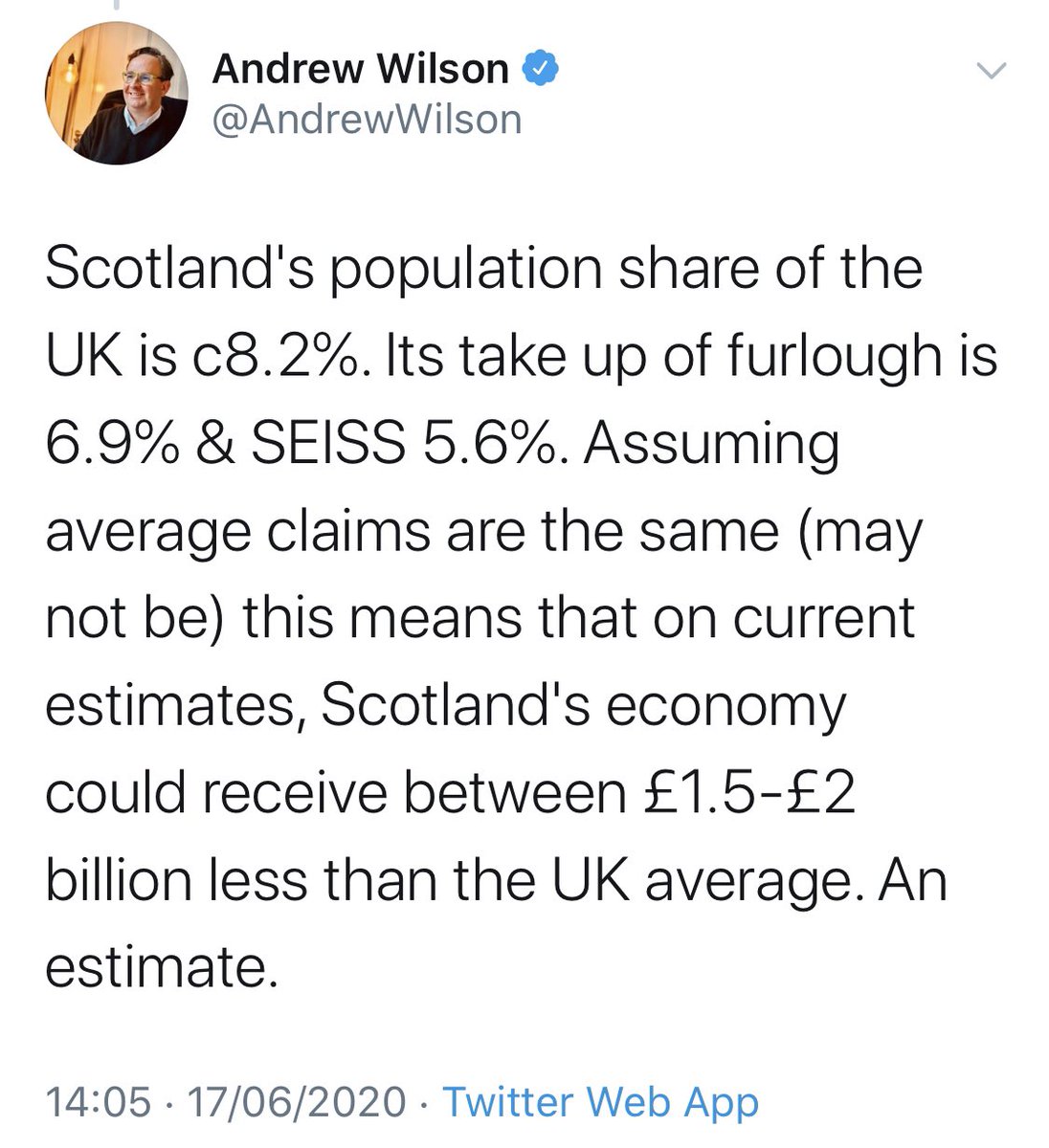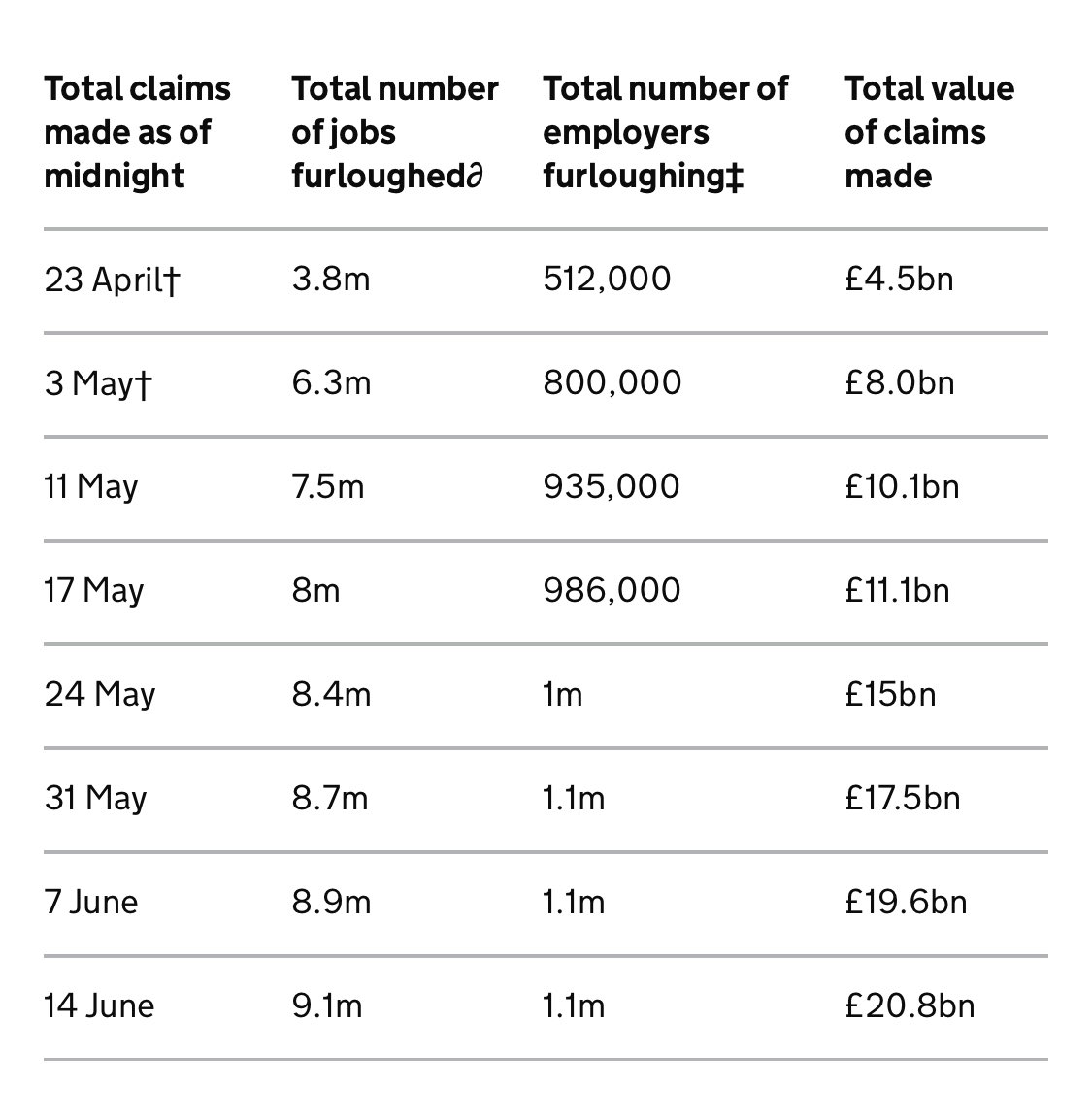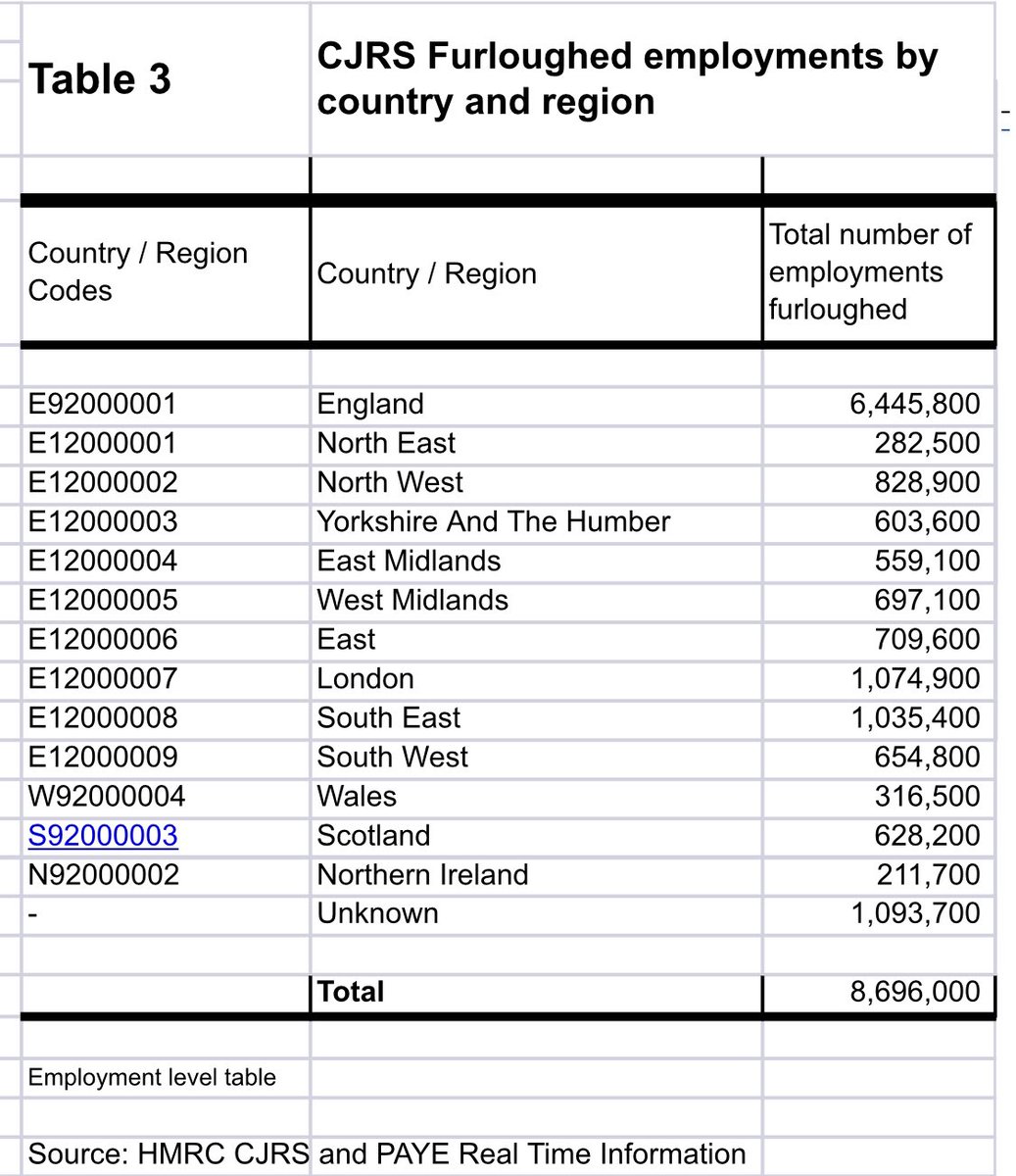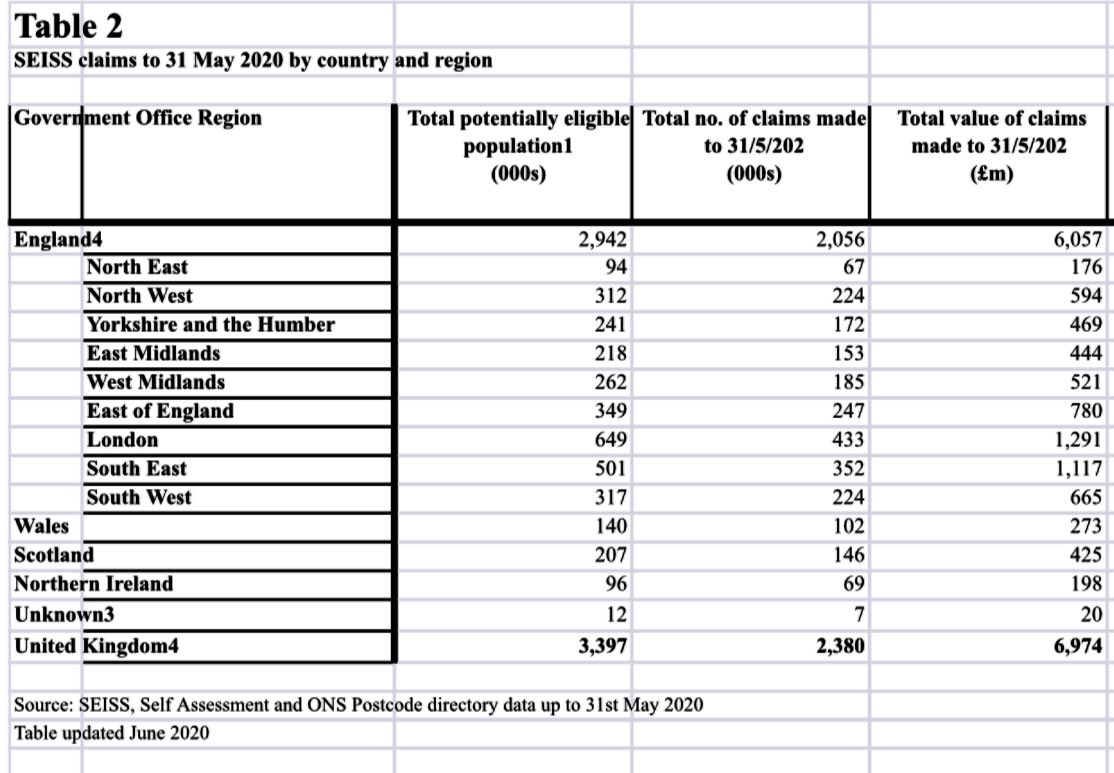As one of the few people to have read @AndrewWilson’s Growth Commission report, I thought it might be a good idea to check the figures he mentions in this thread. (1/14) https://twitter.com/andrewwilson/status/1273240421527945219">https://twitter.com/andrewwil...
It’s a (mostly) straightforward matter to reverse engineer how Wilson calculated these numbers. (2/14)
The government has released a breakdown of “employments furloughed” by nation and region, as of 31st May. (3/14) Source: https://www.gov.uk/government/news/figures-show-uk-government-supporting-incomes-across-all-nations-during-coronavirus">https://www.gov.uk/governmen...
The overall total (but not the national/regional breakdown) is updated on a weekly basis, and the latest total (as of 14th June) is shown below. (4/14) Source: https://www.gov.uk/government/collections/hmrc-coronavirus-covid-19-statistics">https://www.gov.uk/governmen...
Wilson has taken 628k employments furloughed in Scotland as of 31st May, and divided by the latest overall total of 9.1m as of 14th June.
0.628/9.1 = 6.9%
(5/14)
0.628/9.1 = 6.9%
(5/14)
When calculating such a ratio, the data in the numerator and denominator must be temporally consistent, so this is Wilson’s first mistake. But it isn’t his most important mistake.
The detail of the breakdown by nation/region is shown below. (6/14) Source: https://www.gov.uk/government/statistics/coronavirus-job-retention-scheme-statistics-june-2020">https://www.gov.uk/governmen...
The detail of the breakdown by nation/region is shown below. (6/14) Source: https://www.gov.uk/government/statistics/coronavirus-job-retention-scheme-statistics-june-2020">https://www.gov.uk/governmen...
Critically, a significant number of the claims are of unknown region. The only meaningful ratio to calculate here is Scotland’s share of total claims *where the region is known*.
That total is 8.7m - 1.1m = 7.6m
0.628 / 7.6 = 8.3%
(7/14)
That total is 8.7m - 1.1m = 7.6m
0.628 / 7.6 = 8.3%
(7/14)
So, Scotland’s share of furloughed employments (where the region is known) is slightly higher than its 8.2% population share. (8/14)
With respect to the SEISS scheme, Wilson has made the same temporal inconsistency mistake, and failed to notice that the detail released with the data reveals exactly what proportion of support by value went to Scotland, as of 31st May. (9/14) Source: https://www.gov.uk/government/statistics/self-employment-income-support-scheme-statistics-june-2020">https://www.gov.uk/governmen...
Scotland had received 6.1% by value of SEISS support as of 31st May. This is less than Scotland’s population share, but the data also reveals that the take-up rate in Scotland was 70% of those eligible – exactly in line with the UK average. (10/14)
The average value of each claim in Scotland was also exactly in line with the UK average. Scotland simply has a smaller proportion people in self-employment than the rest of the UK. (11/14)
So, turning to Wilson’s claim that Scotland might receive £1.5bn - £2.0bn less UK government support than it could have expected on a population share basis. How does that stack up? (12/14)
In this case Wilson’s numbers are so wrong it is impossible to reverse engineer how he calculated them. The latest OBR estimate puts the lifetime costs of both schemes at £60bn (furlough scheme) and £15bn (SEISS). (13/14) Source: https://obr.uk/coronavirus-analysis/">https://obr.uk/coronavir...
Since the furlough scheme dominates, and Scotland actually has greater than its population share of furloughed employments, it is clear that Wilson’s central proposition is false, and his figures are wildly incorrect. (14/14)

 Read on Twitter
Read on Twitter






